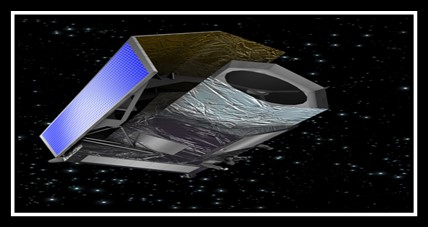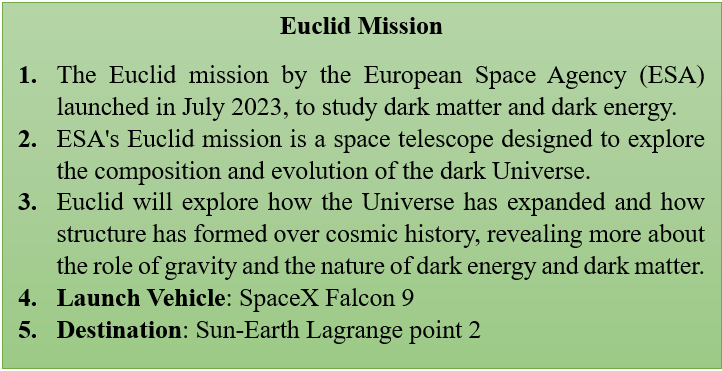- Courses
- GS Full Course 1 Year
- GS Full Course 2 Year
- GS Full Course 3 Year
- GS Full Course Till Selection
- Online Program
- GS Recorded Course
- NCERT (Recorded 500+ Hours)
- Polity Recorded Course
- Geography Recorded Course
- Economy Recorded Course
- AMAC Recorded Course
- Modern India, Post Independence & World History
- Environment Recoded Course
- Governance Recoded Course
- Science & Tech. Recoded Course
- International Relations and Internal Security Recorded Course
- Disaster Management Module Course
- Ethics Recoded Course
- Essay Recoded Course
- Current Affairs Recoded Course
- CSAT
- 5 LAYERED ARJUNA Mentorship
- Public Administration Optional
- ABOUT US
- OUR TOPPERS
- TEST SERIES
- FREE STUDY MATERIAL
- VIDEOS
- CONTACT US
Euclid Mission
Euclid Mission
16-11-2023

Latest Context
- Recently, The Euclid space telescope has beamed back its first images in a mission that promises to lift a veil on the “dark universe”.
- It has shared its initial five science images which include pictures of expansive galaxy clusters, detailed shots of two nearby galaxies, a nebula, and a gravitationally connected group of stars known as a globular cluster.

Findings by Euclid’s Mission |
|
|
|
|
|
|
|
|
|
Dark Matter
- About
- Dark matter, though never detected, is believed to be present in the entire universe, its existence presumed because a number of observable celestial phenomena could not be possible if the universe did not have much more matter in it than is seen.
- It is believed to make up more than 95% of all the universe.
- Characteristics
- The material is considered to be a ‘matter’ since it has gravitational attraction and it is ‘dark’ because it does not seem to interact with light (or any part of the electromagnetic spectrum).
- Its gravitational force prevents stars in our Milky Way from flying apart.
- However, attempts to detect such dark matter particles using underground experiments, or accelerator experiments including the world's largest accelerator, the Large Hadron Collider (LHC), have failed so far.



